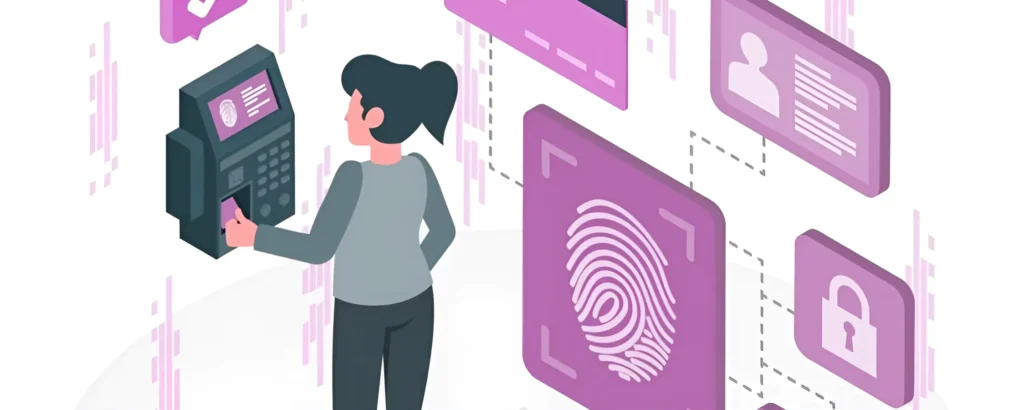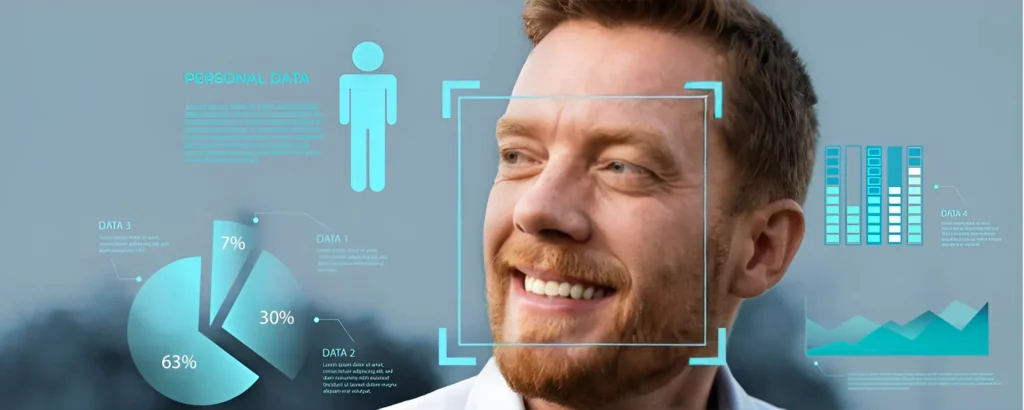Why Do Banks Need Biometrics?
As the use of digital banking grows and security concerns rise, banks are looking for stronger authentication methods to securely verify the identities of their clients. Biometrics offers a safer and more convenient password solution than traditional ones, which are simple to guess or steal. Furthermore, consumers need quicker and simpler login procedures on mobile devices, where inputting passwords may be a pain. Banks can overcome these challenges through the seamless, contactless authentication provided by biometric technology, such as facial, fingerprint, or iris identification.
Using biometrics also assists banks in adhering to more stringent regulations around customer identification and fraud detection. Identity verification is still possible while maintaining privacy when biometric templates are stored rather than raw data. Banks can be notified of irregularities in consumer spending patterns by using biometric logins to link to customers’ financial activities. This allows suspicious activity to be flagged faster, reducing losses from crimes like identity theft that plague both banks and customers.
Are Biometrics Safe For Banking?
Concerns about the security and privacy of biometric data are among the greatest concerns that many individuals have when it comes to using biometrics in banking. Leading authentication standards, however, guarantee the secure implementation of biometrics in banking. Biometric templates, which are encrypted mathematical representations of measurements, are saved in place of raw fingerprint or face photographs. These are unreachable and by themselves refrain from disclosing any personal information.
Banks employ multi-factor authentication by combining biometrics with pre-existing security mechanisms like passwords or PINs. If biometric templates are taken, they cannot be immediately exploited for fraudulent purposes. Templates are reversible and renewable, in contrast to other personal IDs. Biometric data is protected during transmission and in databases by strong encryption and access controls. Bank regulation also uses controls and audits of security practices. Overall, biometrics delivers robust client authentication security that is either comparable to or better than traditional passwords when used with the appropriate safeguards.
What are The Advantages and Disadvantages of Biometrics in Banking?

Advantages
- Convenience: Compared to inputting lengthy passwords on mobile devices, biometric login is contactless and quicker. The user experience is enhanced by this.
- Increased security: Biometrics, such as fingerprints or iris scans, are harder to forget, share, or hack than passwords. Stronger identity verification is also possible with multiple biometrics.
- Privacy: Individuals cannot be identified from biometric templates that are stored. Private biometric information is kept private as clients openly authenticate themselves.
- Lower expenses: Biometrics eliminates the need for a complex infrastructure for password resets, maintenance, and management. It stops deception, which reduces losses.
Disadvantages
- Irreversible nature: Unlike passwords, biometrics cannot be altered if they are hacked. Permanent identity theft is a risk that comes with this.
- Technical hiccups: Surface scratches or other environmental factors reducing experience may cause sensors to misread biometrics.
- Absence of a common standard: A variety of biometric technologies make integration more difficult, necessitating adaptations and raising rollout expenses.
- Customer perceptions: People are less ready to adopt new identification techniques when they are afraid of data theft and widespread surveillance.
- Exclusion risk: Some clients are unable to receive services because they do not have valid biometrics owing to age, illness, or injury.
What are The Types of Biometrics Used in Banking?
Typical biometric identifiers for financial identification consist of:
- Fingerprint recognition: This method confirms IDs by examining ridge and furrow patterns. Due to affordable, precise sensors, biometrics have been used extensively.
- Facial recognition: This technology uses images or cameras to map the facial structures and distances between features. Ideal for ATM and mobile device contactless login.
- Iris scanning: This method records the iris’s distinguishable features for identification. great precision is possible even with identical twins, but certain cameras are needed.
- Voice identification: It uses a person’s distinctive vocal tract features, pitch, cadence, and phrase pronunciation to identify them. Technology advancements can deteriorate with aging and disease.
- Recognition of handwriting and signatures: Examines the forms, pressure points, line thickness, and other dynamics of freehand writing or signing on a screen. far more challenging than static biometrics.
- Palm vein scanning: This technique maps each person’s unique subcutaneous veins. provides financial institutions with competitive identification.
Depending on technical capabilities, client needs, and regulatory requirements, each bank should determine which biometric is the most appropriate and accurate.
How is biometrics implemented in banking?

Banks leverage a variety of biometric channels suited for interactions:
- Mobile/online/telephone banking – Facial or fingerprint recognition enables quick authentication through selfie capture or fingerprint sensor on customer device during secure authentication.
- ATMs – Face or fingerprint biometrics integrated into ATM screens allow contactless cash withdrawals without cards. Improves hygiene and reduces skimming.
- Branch banking – Fingerprint readers or palm vein scanners installed at teller counters replace debit cards or verify identities during in-person service requests.
- Account opening – Biometrics like iris scans capture new customer identities for electronic Know Your Customer checks, facilitating regulatory compliance.
- Payroll/pension distribution – Facial verification guarantees rightful beneficiaries receive social security or wages while preventing proxy payments or fraud.
- Secure login – Biometrics acts as a secondary login factor after the username on bank portals with security alerts prompted for unrecognized devices.
Does biometrics in banking positively impact the customer experience?
With traditional passwords prone to compromise, biometric authentication streamlines banking access safely. No more remembering complex combinations to log in on the go from gadgets. Customers appreciate time-savings from biometrics one-touch logins without cumbersome identity proofing. They gain trust as biometric usage bolsters security protecting financial and personal data against digital dangers.
Speedier enrollment and seamless transaction authentications enhance convenience. Frictionless digital banking boosts customer satisfaction keeping clients loyal to progressive institutions. Biometrics enables secure self-service access on any channel from remote rural areas historically underserved. It addresses inclusion for the disabled, and elderly by simplifying authentication needs beyond typing.
Quicker KYC approvals accelerate account openings through biometrics facilitating swift money transfers digitally without branch visits. Contactless ATM, teller interactions uphold health safety post-pandemic. Improved experience counterbalances perceptions around privacy invasion, building trust in evolving technologies. Overall, when implemented sensitively biometrics uplifts user journeys strengthening customer-bank bonds.
Conclusion
In conclusion, with appropriate security standards and change management biometrics presents enormous promise for positively transforming safety and convenience in banking. Adoption accelerates digital services safely addressing evolving threats, and regulations while enhancing customer experiences central to business success. Despite technical challenges, when implemented sensitively biometrics empowers financial services forward into digital futures.








